Regenerating Rancho Las Damas in Mexico
We highlight internationally renowned rancher, president of Pasticultores del Desierto, consultant for Understanding Ag group, and Soil for Water technical advisor, Alejandro Carrillo. In the early 2000s, at the request of his father, Alejandro took over his family’s ranch, Las Damas in Chihuahua, Mexico. At this time, he began researching regenerative agriculture methods in hopes of improving the revenue of the ranch, which had only been profiting approximately every four years. Luckily for him, there were people nearby who were already practicing regenerative agriculture, and who mentored Alejandro on his journey to revive the ecology of his ranch to grow more grass and revenue.
Sitting in the heart of the Chihuahuan Desert, Las Damas receives an average yearly rainfall of ten inches. The Chihuahuan desert is the largest desert in North America and is considered the most diverse desert in the western hemisphere. Vast and diverse grasslands make this desert unique. However, it is also one of the most endangered regions in the world due to overgrazing, water depletion and diversion, urbanization, agricultural practices, resource extraction, invasive exotic species, and overcollection of native plants and animals. The good news is Alejandro, along with other ranchers and conservationists in his community, are doing what they can to regenerate and preserve this important ecosystem.
Alejandro used four simple tools over the last 15 years to regenerate the ecosystem on his ranch:
- Added fencing to increase the number of pastures
- Moves the cattle daily between the pastures
- Increased and improve cattle drinking water infrastructure
- Allow 12-14 months of rest in each pasture between grazing periods
Las Damas has permanent cross-fencing consisting of a single high tensile strand, and movable polywire electric fencing throughout the ranch. What started as ten pastures across 25,000 grazable acres, has grown to 500 pastures, allowing cattle to graze each pasture once a year.
This allows for adequate rest before the next grazing to improve ideal forage. Depending on the density of vegetation in each pasture, cattle are moved once or twice a day to create short-duration, high-intensity grazing periods. Since drinking water for livestock is the greatest limiting factor on the ranch, Alejandro was very intentional about ensuring water distribution throughout. Round concrete water reservoirs capable of holding 40,000 gallons of water were placed at high elevations on the ranch. Then, smaller 2,500-gallon concrete water troughs were placed at lower elevations on the ranch. These smaller water troughs are gravity-fed from the large water reservoirs above and are shallower to allow cattle to drink. By investing $100 per hectare over 15 years on water and fencing infrastructure, Alejandro has made all the grazable lands on the ranch utilizable to livestock, improving his profitability by 350 percent.
Most ranches in the surrounding area of Las Damas stock one cow for every 125-150 acres. At Las Damas, Alejandro is stocking one cow for every 42 acres. Prior to transitioning to rotational grazing, the ranch averaged 200 head of cattle annually. It has since tripled to 600. By using the four tools, soil water infiltration rates on the ranch have improved from two inches of rain per hour to 18-20 inches per hour.
Besides a salt mineral, there are no supplements or vaccination protocols since all cattle are born and bred on the ranch; it is a closed herd. This removes many biosecurity issues involved when pathogens enter a herd from external sources. There is also evidence that grass-fed cows are more resilient to diseases due to the increased diversity of their gut microbiome, a critical element to health. Cow mortality rates dropped from 10% before the transition to now 1% annually.
Even though cows are being moved daily, the operating costs have decreased while profits have increased. Alejandro says the biggest benefit to the transition has been the improved communication among the three generations of the family ranch. Now, everyone gets excited about the projects and what they’re doing for the landscape. Everyone now has an opinion on how to continue to improve it.
“Going to the ranch and seeing what nature can offer brings joy and peace of mind. That has no price,” says Alejandro.
While Alejandro recommends using the four tools of improved fencing, daily cattle movement, water infrastructure, and rest, he also recommends observing the land closely. There are no hard-and-fast rules for determining how long to graze a pasture, or when to reintroduce cattle again. There are so many variables at play that one cannot count on prescribed timelines or durations.
Finally, he recommends starting with the lowest-hanging fruit. He suggests starting with pastures that have healthier soil and higher grass density, then gradually moving on to improving less-fertile pastures. That will give the biggest and most immediate return on investment. It can also serve as the proof point needed to continue holistic management practices.
In the face of more ranches being abandoned and a younger generation that is less interested in pursuing agriculture, Alejandro has hope. He is here to win the battle of bridging environmental conservation, agricultural productivity, and economic prosperity. He believes we must be willing to lose sometimes, correct our ways, then try again. Throughout these trials, the goal of improving our ecosystem will remain the same.
For more information on Rancho Las Damas click here. For great resources on properly utilizing fencing, cattle movement, water infrastructure, land rest, and other regenerative tools, visit UnderstandingAg.com.
Learn more from Alejandro during NCAT’s second annual Soil Health Innovations Conference.

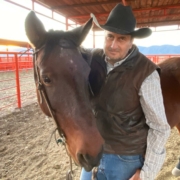
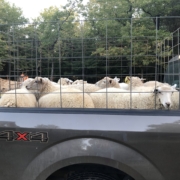
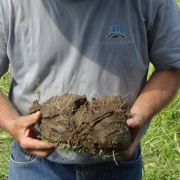
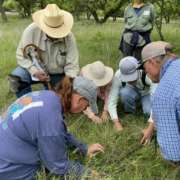
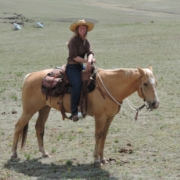
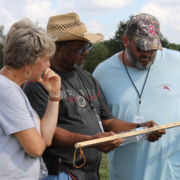 NCAT
NCAT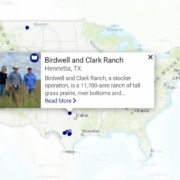
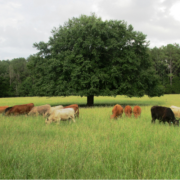
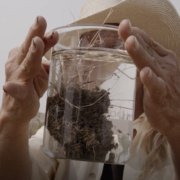

 Photo courtesy Scott McClenahan
Photo courtesy Scott McClenahan